
Seminar title: How do we interpret the neuronal talking among populations? Information Extraction Methods from Microelectrode Array Measurements of Neuronal Networks
By Emre Kapucu
Postdoctoral Researcher, Tampere University of Technology, Finland
When: 28th of July 2017 at 13:00-13:45
Where: Aud. 6, building 1170, room 347
Speaker host: Group Leader Poul Henning Jensen, DANDRITE, Dept. of Biomedicine, Aarhus University
Abstract
Microelectrode arrays (MEAs) record mesoscale extracellular electrophysiological activity, which consists of local field potentials and extracellular action potentials. MEAs with electrode diameter of 10 to 30 µm and an inter-electrode distance of 100 to 500 µm have been found beneficial for studying local neuronal activity and population interactions. Such sort of information can be utilized to assess general firing behaviors of local neuronal populations, information flow between neuronal populations and relatedly, connectivity based neuronal network analysis.
In our works, we have used information theory based tools and methods to interpret neuronal signals recorded from a single or multiple recording locations. We have analyzed the collected information to understand functionality during spontaneous development and maturation of neuronal networks and responses to pharmacological/electrical manipulation.
In conclusion, with our developed and applied methods we have extracted information which provides important complements to the existing ones to understand neuronal behavior and population-wise neuronal interactions.

Seminar title: Sparse coding for odour-specific memories through balanced excitation and inhibition
By Dr. Andrew Lin
University of Sheffield, UK
When: 30th of June 2017 at 10:00-11:00
Where: Aud. 6, building 1170, room 347
Speaker host: Group Leader Anne von Philipsborn, DANDRITE, Dept. of Molecular Biology and Genetics, Aarhus University
Abstract
How does the brain form stimulus-specific memories? In fruit flies, olfactory associative memories are stored in the Kenyon cells of the mushroom body, and we found that the odour-specificity of these memories is enhanced by sparse, decorrelated odour coding in Kenyon cells. Blocking feedback inhibition onto Kenyon cells makes Kenyon cell odour responses less sparse and more correlated, and prevents flies from learning to discriminate similar odours. We are now investigating how the mushroom body tunes the balance of excitatory and inhibitory inputs in order to produce reliable sparse, decorrelated coding, based on preliminary results suggesting that Kenyon cells compensate for perturbations in excitation/inhibition balance.

Seminar title: The swiss-army-knife dopamine model: A model for reinforcement learning, ADHD, and Parkinson's disease
By Jacob Dreyer
PhD, Center for Neuroscience, University of Copenhagen
When: 21st of June 2017 at 15:15-16:00
Where: Aud. 6, building 1170, room 347
Speaker host: Group Leader Duda Kvitsiani, DANDRITE, Dept. of Molecular Biology and Genetics, Aarhus University
Abstract
Dopamine (DA) is a neuromodulator involved in reinforcement learning and motivation. DA neurons reside in several nuclei in the midbrain and project to multiple targets including ventral and dorsal striatum. However little is known about the relationship between DA cell firing and DA levels and how DA cell firing is translated into a functional signal by post synaptic neurons. I have developed a mathematical model that describe the signal by a small group of DAneurons. The model is able to provide quantitative predictions of DA levels, their dynamics, and their communication with post synaptic D1 and D2 receptors. Importantly, the model can provide firm predictions of how these observables are changed by DA uptake inhibitors and by loss of DA neurons as in Parkinsons disease.
Jacob will first introduce the model and show its predictions in normal state and how DA signaling is affected by cell loss. Then he will discuss how the model can be applied to experimental data.

Seminar title: Routing visual information through the superior colliculus
By Karl Farrow
Assistant Professor, KU Leuven
When: 21st of June 2017 at 11:00-11:45
Where: Aud. 6, building 1170, room 347
Speaker host: Group Leader Keisuke Yonehara, DANDRITE, Dept. of Biomedicine, Aarhus University
Abstract
Visually guided behavior is based on the extraction of relevant features from the visual scene and the routing of this information to the correct motor centers. At the first stage of visual processing, the retina splits the visual scene into over 30 distinct features. Each feature is embodied by a different ganglion cell type that sends visual information to one or several brain targets. To determine the rules of routing we have studied two di-synaptic neuronal circuits that link the mouse retina via the superior colliculus to two mid-brain nuclei, whose optogenetic activation each leads to similar avoidance behaviors in mice. Here we have applied a trans-synaptic viral tracing strategy to specifically label the retinal ganglion cells at the beginning of each of the two pathways. By analyzing morphological properties of the labelled cells, we can identify the ganglion cell types that are part of each of the circuits..
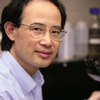
Seminar title: The Ryanodine Receptor Store-Sensing Gate: from Structure to Cardiac and Neurological Disorder
By Wayne Chen
Professor, University of Calgary, Canada
When: 15th of June 2017 at 10:00-11:00
Where: Aud. 6, building 1170, room 347
Speaker host: Group Leader Prof. Poul Nissen, DANDRITE, Dept. of Molecular Biology and Genetics, Aarhus University and Associate Prof. Mette Nyegaard, iPSYCH, Dept. of Biomedicine, Aarhus University
Abstract
In this seminar Wayne Chen will present the recently resolved high-resolution three-dimensional structure of the cardiac ryanodine receptor (RyR2). This 3D structure provides novel insights into the structural basis of the store calcium sensing gate mechanism that is critical for the generation of calcium waves/oscillations. He will also talk about the significance of this RyR2 store sensing gate in the pathogenesis of cardiac arrhythmias and Alzheimer’s disease. Finally, he will present data on the role of the store sensing gate of inositol 1,4,5-trisphosphate receptor type 1 (ITPR1) in neurological disorders in mice and possibly in humans.

Seminar title: Targeting fatty acid synthesis II proteins for drug development
By Sandra Eltschkner
PhD student, University of Wuerzburg, Germany
When: 31st of May 2017 at 12:30-13:00
Where: Building 3130, room 303, Aarhus University
Speaker host: Group Leader Poul Nissen, DANDRITE, Dept. of Molecular Biology and Genetics, Aarhus University

Seminar title: Regulation of neural stem cells by the microenvironment
By Valérie Coronas
Laboratory of Signalisation and Transports Ioniques Membranaires,
University of Poitiers, France
When: 26th of May 2017 at 9:00-10:00
Where: Aud. 6, building 1170, room 347
Speaker host: Group Leader Mark Denham, DANDRITE, Dept. of Biomedicine, Aarhus University
Abstract
Short resume of research activity: Since 2004, I develop a research activity focused on the mechanisms that control the stem cells of the brain. In this context, we have addressed in mice models, for more than ten years the capacity of molecules locally produced in the brain (ie the microenvironment) to regulate brain stem cells. This led us to discover novel regulators of brain stem cells. Specifically, we identified that the growth factor HGF (hepatocyte growth factor) is produced by brain stem cells and controls their proliferation (Stem Cells, 2009, 27, 408-419). Also, we found that a protein previously known for its role in blood coagulation (a vitamin K dependent protein), is expressed by neural stem cells and controls brain stem cell proliferation and differentiation (Stem Cells, 2012, 30, 719-731). Furthermore, we recently discovered that brain stem cells in addition to their capacity to engender new cells are able of removing the debris of dead cells (Stem Cells 2015, 33, 515-25). This latter is all the more interesting as inefficient removal of dead cells leads to major functional impairments and to pathologies. In the light of these results, we undertook during the last two years to decipher how the brain stem cells are able to integrate all information they receive in order to generate a response. In our ongoing studies, we have identified that some calcium channels are key molecules that integrate the signals arriving to brain stem cells and that they are major actors of the maintenance of brain stem cells.

Seminar title: GPCR ligand identification and crystallization
By David Gloriam
Associate Professor, Department of Drug design and Pharmacology, University of Copenhagen
When: 11th of May 2017 at 9:30-10:00
Where: Building 3140, room 114 (Meeting room 5)
Speaker host: Group Leader Poul Nissen, DANDRITE, Dept. of Molecular Biology and Genetics, Aarhus University
Abstract
Associate Professor David Gloriam conducts computational drug design tightly integrated with chemistry and pharmacology. He has a ERC Starting Grant and Lundbeck Foundation fellowship for identification of orphan receptor ligands and functions. David also heads GPCRdb, a community hub (~1700 monthly users) for G protein-coupled receptors with reference data, visualisation and tools to design new experiments, including crystallisation constructs. His group has recently started up GPCR crystallography and biased signalling projects.

Seminar title: Synapses in health and disease
By Dr. Robert Malinow
Professor at University of California, San Diego
When: 10th of May 2017 at 11:00-11:45
Where: Aud. A, building 1162, room 013
Speaker host: Group Leader Sadegh Nabavi, DANDRITE, Dept. of Molecular Biology and Genetics, Aarhus University
Abstract
To be announced.

Seminar title: From Ebola to Zika – Tracking large-scale outbreaks using infectious disease genomics
By Kristian G. Andersen
Assistant Professor, Broad Institute of MIT and Harvard
When: 10th of April 2017 at 14:00-15:00
Where: Jeppe Vontilius Auditorium, Bartholins Allé 3, building 1252, room 310
Speaker host: Core Group Leader Poul Nissen, DANDRITE, Dept. of Molecular Biology and Genetics, Aarhus University
Abstract
The Ebola epidemic that ravaged West Africa from 2013 to 2016 was by far the largest outbreak of Ebola ever recorded. Weak healthcare infrastructure, overcrowded cities and community resistance to intervention allowed the epidemic to spin out of control. As the Ebola epidemic was winding down, another virus immediately took center stage - Zika. This virus had been causing multiple isolated epidemics since 2007, but was not recognized as a severe threat until it hit Brazil in 2015. It is now quickly spreading across the globe, causing a worldwide pandemic. Infectious disease outbreaks - such as those caused by Zika and Ebola - serve as stark reminders that emerging viruses pose one of the greatest threats to human health.
Our group is using viral genomics, computational biology, and traditional molecular biology, to gain insights into how viruses emerge and spread in human populations. By generating large-scale genomic datasets of Ebola virus sequences from hundred of infected patients, we dissected the trajectory of how Ebola rapidly spread across West Africa More recently, our group sequenced and analyzed the first Zika virus dataset from local human transmissions and mosquitoes in Florida. Based on this data, we have been able to demonstrate that the Florida outbreak is much more complex than previously accepted. We show that multiple introductions happened into Florida in the spring of 2016 leading to sustained transmission chains. We show that these Zika virus lineages originated in the Caribbean and were likely brought to the United States via frequent cruise ship traffic. By modeling genomic data and mosquito abundance, we also show that Miami and Southern Florida is at particular risk for future Zika outbreaks.

Seminar title: "A role for the extracellular matrix in neurotrophic factor signaling?"
By Mikhail Paveliey
Postdoc at University of Helsinki, Finland
When: 30th of March 2017 at 10:15-12:00
Where: Aud. A,Building 1170, room 347
Speaker host: Prof. Anders Nykjaer, DANDRITE, Dept. of Biomedicine, Aarhus University
Abstract
Neurotrophic factors (NTFs) and extracellular matrix (ECM) are the two groups of tissue signaling molecules that are required for proper development of CNS and for its function in adulthood. Both neurotrophic factors and ECM are actively used for the development of therapies promoting posttraumatic regeneration in the injured brain and spinal cord. There is exceptionally strong demand for those new therapies as regeneration normally fails in the adult human CNS and such injuries lead to lifelong disabilities. Interestingly, the two major regulators of CNS regeneration – NTFs and ECM interact intensely with each other via direct molecular interactions and via signaling crosstalk. In our recent study we tested the NTF pleiotrophin (also known as HB-GAM) as a drug candidate for the treatment of CNS injuries. Pleiotrophin (like BDNF and many other NTFs) binds with high affinity to chondroitin sulfates – the major component of the brain ECM. We demonstrate that chondroitin sulfates are required for the ability of soluble pleiotrophin to induce neurite growth in cortical neurons. At the same time chondroitin sulfate by itself is known to act as a major inhibitor of axonal regeneration in the injured CNS in vivo. We used multiphoton imaging of regenerating dendrites and axons in living injured brain and spinal cord to demonstrate that pleiotrophin converts the chondroitin sulfate-containing posttraumatic scar ECM from inhibitor into a potent activator of axonal and dendritic regeneration. This type of functional interaction between NTFs and ECM may also have broader physiological implications in brain plasticity and learning.

Seminar on "Processing of global motion image by local clusters of retinal ganglion cells"
By Akihiro Matsumoto
PhD Student, Department of Psychology, University of Tokyo
When: 14th of March 2017 at 11:00-12:00
Where: Building 1170, room 347
Speaker host: Group Leader Keisuke Yonehara, DANDRITE, Dept. of Biomedicine, Aarhus University
Abstract
Our visual perception is unified and continuous, though our eyes repeatedly shift position and alter fixation. The whole image projected on the retina (the retinal image) not only moves rapidly during saccade but also jitters even during steady gaze due to fixational eye movements. However, it is not yet fully understood how the retina processes the global motion images. Here, we show the novel processing of eye movement-like global motion images by coordinated retinal ganglion cells (RGCs).
We recorded the firing of RGCs in the goldfish isolated retina using a multi-electrode array, and classified each RGC into several groups based on the profile of receptive field (RF). We found that the global jitter motion (simulated fixational eye movements) modulated the spatiotemporal RF properties in a group-specific manner. Fast-transient (Ft) RGC showed significant spatial expansion of the RF and sensitization of the integration kinetics. Whole-cell recordings revealed that during the global jitter motion Ft RGC received “sharp excitatory postsynaptic currents (sharp EPSCs)” with large amplitude and fast rise time. The sharp EPSC was evoked by global stimulation outside the RF estimated by the static background. Subsequent global rapid motion with spatiotemporal correlation drove the nonlinear and temporally coordinated response of Ft RGC. This transient and coordinated firing can transmit afferent retinal information to the brain during saccades and might help the brain respond to the visual scene during eye movements

Seminar on " Neuronal population activity involved in motor patterns of the spinal cord: spiking regimes and skewed involvement"
By Rune Berg
Associate Professor, University of Copenhagen
When: 26th of January 2017 at 11:00 – 12:00
Where: Building 1170, room 347
Speaker host: Group Leader Anne von Philipsborn, DANDRITE, Dept. of Molecular Biology and Genetics, Aarhus University
Abstract
Motor patterns such as chewing, breathing, walking and scratching are primarily produced by neuronal circuits within the brainstem or spinal cord. These activities are produced by concerted neuronal activity, but little is known about the degree of participation of the individual neurons. Here, we use multi-channel recording (256 channels) in turtles performing scratch motor pattern to investigate the distribution of spike rates across neurons. We found that the shape of the distribution is skewed and can be described as “log-normal”-like, i.e. normally shaped on logarithmic frequency-axis. Such distributions have been observed in other parts of the nervous system and been suggested to implicate a fluctuation driven regime (Roxin et al J. Neurosci. 2011). This is due to an expansive nonlinearity of the neuronal input-output function when the membrane potential is lurking in sub-threshold region. We further test this hypothesis by quantifying the irregularity of spiking across time and across the population as well as via intra-cellular recordings. We find that the population moves between supra- and sub-threshold regimes, but the largest fraction of neurons spent most time in the sub-threshold, i.e. fluctuation driven regime.

Seminar on "Determination of spatio-temporal input current patterns of single hippocampal neurons based on extracellular potential measurements."
By Zoltan Somogyvari
PhD, Wigner Research Institute for Physics of the HAS
When: 16th of January 2017 at 13:00 – 14:00
Where: Building 1170, room 347
Speaker host: Group Leader Duda Kvitsiani, DANDRITE, Dept. of Molecular Biology and Genetics, Aarhus University
Abstract
One of the main obstacle to decipher the information processing and the neural communication in the brain is the lack of any experimental technique which is able to measure the spatio-temporal distribution of synaptic currents on individual neurons in freely behaving animals. Thus, we developed a new micro electric imaging technique, which is able to determine the currents flowing on single cortical or thalamic neurons during action potentials based on the extracellular (EC) electric potentials recorded by micro electrode array. We have shown the differences of cell-type specific input current patterns preceding and causing the action potentials during different oscillatory states of hippocampus. The layers and subfields of the hippocampus have been identified based on the recorded electrical signals, by using our electroanatomy concept and latter verified by histology. The types of the EC recorded and clustered cells were determined based on their electrophysiological characteristics and their spatial tuning. As the dynamics of the total synaptic current is depends on the natural statistics of the synaptic activations, measuring the spatio-temporal aspects of net synaptic currents could lead to better understanding of the neural code, by refining our knowledge about the input-output transformation implemented by the neurons.

Seminar on "Tonic and phasic properties of central cholinergic neurons in sensory detection"
By Balazs Hangya
Head of the Lendület Laboratory of Systems Neuroscience, Institute of Experimental Medicine of the Hungarian Academy of Sciences
When: 11th of January 2017 at 13:00 – 14:00
Where: Building 1170, room 347
Speaker host: Group Leader Duda Kvitsiani, DANDRITE, Dept. of Molecular Biology and Genetics, Aarhus University
Abstract
The nucleus basalis (NB) gives rise to the central cholinergic neuromodulatory system that innervates the entire neocortex and is thought to regulate sensory processing, attention and learning. However, it is not known when cholinergic neurons are recruited during behavior and how their activity might support different aspects of cognition. We used optogenetic identification to record cholinergic neurons in behaving mice. Central cholinergic neurons were characterized as bursting and non-bursting cells. We found that both subtypes responded phasically to primary reward and punishment with remarkable speed and precision (18±2 ms), unexpected for a neuromodulatory system. Responses to reward were scaled by reinforcement surprise, raising the possibility that the cholinergic system also conveys cognitive information. Tonic firing properties changed during sleep-wake states but remained similar for bursting and non-bursting neurons, contradicting the current view of bursting cells transmitting phasic information and tonic, non-bursting neurons setting ambient acetylcholine levels. These results suggest that cholinergic neurons form a rapid, reliable and temporally precise signaling route for reinforcement feedback that can mediate fast cortical activation and plasticity.

Seminar on "Exploring native cellular structure by cryo-electron tomography, correlated cryo-fluorescence microscopy and focused ion beam milling."
By Matt Swulius
Postdoc, HHMI, California Institute of Technology
When: 10th of January 2017 at 11:00 – 12:00 NOTE TIME HAS CHANGED FROM EARLIER ANNOUNCEMENTS
Where: Building 1162-013, aud. A
Speaker host: Group Leader Poul Nissen, DANDRITE, Dept. of Molecular Biology and Genetics, Aarhus University
Abstract
Cryo-electron tomography (CET) allows the direct imaging of intracellular space in a "frozen-hydrated" state, providing 3D molecular-resolution images of native cellular structure. While advances in electron detection and optical technologies are closing the gap between contrast and resolution in CET, simultaneous developments in correlated cryo-fluorescence microscopy and focused ion beam milling promise to guide us directly to targets of interest deep within cryo-preserved mammalian cells and tissue. In this seminar, I will discuss the strength of cryo-electron microscopy in the pursuit of understanding cellular structure and the opportunities that both in vitro and in vivo structural biology provide in this effort. Through examples from my own work with the bacterial cytoskeleton, yeast division machinery and neurons, I hope to provide a realistic perspective on what is currently doable and what the future holds for cellular structural biology.
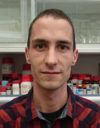
Seminar on "Functional effects of specific lipid binding to Na,K-ATPase"
By Michael Habeck
Postdoctoral fellow, Weizmann Institute of Science
When: 4th of January 2017 at 14:00 – 15:00
Where: Building 1170, room 347
Speaker host: Group Leader Poul Nissen, DANDRITE, Dept. of Molecular Biology and Genetics, Aarhus University
Abstract
Activity and structural integrity of membrane proteins can be regulated either by physical properties of the bilayer or by site-‐specific interactions. For Na,K-‐ATPase, lipids bound to the transmembrane domain were observed in crystal structures yet effects of specific lipid binding are poorly understood.
We addressed this question by combining site directed mutagenesis, biochemical analyses and native mass spectrometry and studied the effect of lipids on stability and activity of recombinant Na,K-‐ATPase. Phosphatidylserine (PS) and cholesterol stabilize the Na-‐pump against thermal and detergent mediated inactivation but do not per se affect activity. ATPase activity is stimulated by polyunsaturated phosphatidylcholine or –ethanolamine (PC/PE), which results from the acceleration of the E1P-‐E2P conformational transition. Both effects occur in detergent in the absence of a bilayer.
Furthermore, they are independent of each other and can be selectively abrogated by mutation of lysine residues at the cytoplasm-‐membrane interface. Thus, binding sites for PS and PC/PE were identified. These findings support the idea of functional specific phospholipid-‐Na,K-‐ATPase interactions. We show specific lipid binding by native MS, which revealed that one molecule each of PS and PC can bind specifically to the Na-‐ pump. Functional properties of detergent soluble Na,K-‐ATPase with PS, cholesterol and PC are remarkably similar to properties of renal enzyme highlighting the importance ofspecific interactions over bulk bilayer interactions.
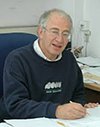
Seminar on "The Extended Transmembrane Domain 10 of the GABA Transporter GAT-1 enables Efficient Ion-Coupled Transport"
By Baruch Kanner
Professor at IMRIC, Hebrew University of Jerusalem
When: 8th of December 2016 at 11:30 – 12:30
Where: Auditorium 6 (room 347), building 1170
Speaker host: Group Leader Poul Nissen, DANDRITE, Dept. of Molecular Biology and Genetics, Aarhus University
Abstract
The GABA transporter GAT-1 mediates electrogenic transport of its substrate together with sodium and chloride. It is a member of the neurotransmitter:sodium:symporters, which are crucial for synaptic transmission. Compared to all other neurotransmitter:sodium:symporters, GAT-1 and the other members of the GABA transporter subfamily, all contain an extra amino acid residue at or near a conserved glycine in transmembrane segment 10. Therefore, we studied the functional impact of deletion and replacement mutants of Gly-457, and its two adjacent residues in GAT-1 and found that the extension is required for tight coupling of the fluxes of the substrate and the cotransported ions.
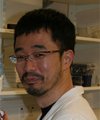
Postdoctorial Associate, Richard Morris lab, University of Edingburgh
Where: Building 1170, room 347
When: 13.45-15.15
Abstract: The retention of episodic-like memory is enhanced when something novel happens shortly before or after encoding. Using an everyday memory task in mice, we sought the neurons mediating this dopamine-dependent novelty effect, previously thought to originate from the tyrosine hydroxylase-expressing (TH+) neurons in the ventral tegmental area (VTA). We find that neuronal firing in the locus coeruleus (LC) is especially sensitive to environmental novelty, LC-TH+ neurons project more profusely than VTA-TH+ neurons to the hippocampus, optogenetic activation of LC-TH+neurons mimics the novelty effect, and this novelty-associated memory enhancement is unaffected by VTA inactivation. Surprisingly, two effects of LC-TH+ photoactivation are sensitive to hippocampal dopamine D1/D5 receptor blockade and resistant to adrenoceptor blockade – memory enhancement and long lasting potentiation of synaptic transmission in CA1 ex vivo. Thus, LC-TH+ neurons, typically defined by noradrenergic signalling, can mediate post-encoding memory enhancement in a manner consistent with possible co-release of dopamine in hippocampus.

Seminar on "The Utility of Utility: A Theory of Homeostatic Choice"
By Ollie Humle
Postdoc at Danish Research Center for Magnetic Resonance from Hvidovre Hospital (University of Copenhagen)
When: 21th of November 2016 at 13:30 – 14:15
Where: Building 1170, room 347 (Aud. 6)
Speaker host: Group Leader Duda Kvitsiani, DANDRITE, Dept. of Molecular Biology and Genetics, Aarhus University
Abstract
Most models of reinforcement learning and decision-making make the assumption that behaviour is optimal insofar as it maximises reward over some temporal horizon. These models necessarily assume that primary rewards exist, but under full audit, do not embody any principled mechanism by which they obtain their exact values. Building on Homeostatic Reinforcement Learning models that rely on drive-reduction as a variational principle, we provide a foundational evolutionary framework for deriving the value of primary rewards. Firstly, we show that fitness-optimal choice entails deciding with respect to the expected time average growth of the survival probabilities. In drive-reduction theoretic terms, we show how long-run survival is only maximised by a drive function that approximates the negative log of the survival likelihood function.
Second, we highlight extant data and outline principled arguments pertaining to the natural statistics of homeostasis and mortality. We find that all data surveyed evinces that survival likelihood functions for homeostatic states are approximately normal,and in all known cases smooth and unimodal. Combining this principled derivation of drive, with empirically derived survival likelihood functions, we derive biologically plausible utility functions and evaluate their predictions for homeostatic choice behaviour.
A corollary of this approach is to recast phasic dopamine as signalling an update to the agent’s rational expectations of future drive. We find that with only minimal assumptions, a stringent set of constraints on choice behaviour can be derived which unify a wide range of economic and behavioral phenomena: marginal decreasing utility, anhedonic effects of irrelevant drive, loss aversion, risk aversion for both gains and losses. We outline the plausibility of this framework as a model of the homeostatic-reward interface between hypothalamus and midbrain, and articulate a diversity of observations that would falsify this class of model. Toward this end, we argue that the prospects of unifying the seemingly disparate phenomena of choice lie below the neck in the constraints imposed by the precarious dynamics of homeostasis.
- Joint work with Tobias L.D. Morville

Seminar on "Speed-dependent interaction of sensory signals and local, pattern-generating activity during walking in Drosophila"
By Volker Berendes
PhD Student, Department for Animal Physiology, University of Cologne, Germany
When: Tuesday the 8th of November 2016 at 13:15 – 14:00
Where: Building 1170, library, Ole Worms Allé, 8000 Aarhus C
Speaker host: Group Leader Anne von Philipsborn, DANDRITE, Dept. of Molecular Biology and Genetics, Aarhus University
Abstract
The rhythmic and coordinated motor output required for terrestrial legged locomotion is a result of interactions between sensory signals from the legs and the activity of local pattern-generating networks. In that notion, local pattern-generating networks provide basic rhythmic output that is modulated on a cycle-by-cycle basis by sensory input mediating the current state of the motor system. How this interaction changes speed-dependently and thereby gives rise to the different coordination patterns observed at different speeds is understood insufficiently. Amputation of individual legs removes load signals and mechanical coupling between legs. Therefore, intact flies and single-leg amputees were observed during walking on an air-suspended ball, walking speed was monitored and oscillation periods, phases, and absolute inter-segmental intervals of movements in the intact legs and single leg stumps were quantified. While the oscillatory frequency in intact legs was dependent on walking speed, stumps showed a high and relatively constant oscillation frequency at all walking speeds. As a consequence, strict cycle to cycle coupling between stumps and intact legs was absent at low walking speeds. Nevertheless, preferred absolute time intervals were found between intact leg liftoff and subsequent levation or depression onset in the stump. At high walking speeds stump oscillations were strongly coupled to the movement of intact legs on a 1-to-1 basis. The nan[36a] mutant, which has defective chordotonal organs, was used to investigate the influence of sensory feedback from chordotonal organs in the intact legs on movements of the stump. In contrast to wild type flies stump oscillations in the mutant flies failed to entrain to the stepping behavior of the intact legs at high walking speeds. A largely constant stump period over the whole speed range indicates that descending signals controlling walking speed do not access the basic pattern-generating circuits directly. Furthermore, in WT flies inter-leg coordination strength seems to be speed-dependent and greater coordination is evident at higher walking speeds


Seminar on "Neuronal Na,K-ATPase in health and disease"
By Anita Aperia
Professor, Swedish Academy member, Department of Women's and Children's Health, Karolinska Institutet, Solna, Sweden
and
Seminar on "Super-resolution studies on Na,K-ATPase a1 and 3 distribution and their relationship to NMDA receptors in hippocampus neutrons, and results on the functional interaction between Na,K-ATPase and NMDA receptors in hippocampus neurons"
By Linda Westin
Graduate student, Department of Women's and Children's Health, Karolinska Institutet, Solna, Sweden
When: Friday the 28th of October 2016 at 11:00 – 12:00
Where: Building 3130, 3rd floor, room 303, Gustav Wieds Vej 10, 8000 Aarhus C
Speaker host: Group Leader Poul Nissen, DANDRITE, Dept. of Molecular Biology and Genetics, Aarhus University
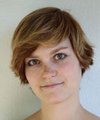
Seminar on "The role of the SERCA Pump in Cell Death and Autophagy"
By Paula Szalai
Joint PhD Student between NCMM and DANDRITE, Centre for Molecular Medicine Norway, University of Oslo, Norway
When: Wednesday the 26th of October 2016 at 14:15 – 15:00
Where: Building 3140, 1st floor, room 114, Gustav Wieds Vej 10, 8000 Aarhus C
Speaker host: Group Leader Poul Nissen, DANDRITE, Dept. of Molecular Biology and Genetics, Aarhus University
Abstract
The natural compound Thapsigargin (Tg) specifically blocks the sarco/endoplasmic reticulum Ca2+ ATPase (SERCA), which pumps Ca2+ from the cytosol to ER. Inhibition of SERCA disrupts calcium homeostasis, leading to a rapid block in bulk autophagy (1), ER stress signalling, and eventually cell death.
Tg is an attractive potential anti-tumor drug because it effectively kills both slow and fast proliferating cancer cells. However, since Tg is toxic also to normal cells, it must be targeted towards the cancer cells. Replacing a side chain with a linker connecting the Tg core to a peptide prevents Tg from entering cells. Two different linker-peptide sequences have been introduced in clinically tested Tg prodrugs; one is cleaved by PSA, secreted by prostate cancer cells, and one is cleaved by PSMA, which is secreted by neovascular tissues of a broad range of tumors. The Tg analogs unmasked by the cleavage are able to enter cells and exert their toxic effects. Interestingly, however, in vitro experiments indicate that Tg analogs have different potencies and cellular effects depending on the terminal amino acid residue (2).
Our goal is to elucidate the structural and molecular determinants of the effects a variety of Tg analogs on ER stress, cell death and autophagy. Our results so far suggest that differential toxic effects of Tg analogs are related to their varying abilities to induce sustained ER stress signaling and to upregulate the transcription of genes encoding pro-apoptotic proteins. Furthermore, our preliminary data indicate differential effects of Tg analogs on bulk autophagy.
References
1. Engedal, N., Torgersen, M. L., Guldvik, I. J., Barfeld, S. J., Bakula, D., Saetre, F., Hagen, L. K., Patterson, J. B., Proikas-Cezanne, T., Seglen, P. O., Simonsen, A., and Mills, I. G. (2013) Modulation of intracellular calcium homeostasis blocks autophagosome formation. Autophagy 9, 1475-1490
2. Dubois, C., Vanden Abeele, F., Sehgal, P., Olesen, C., Junker, S., Christensen, S. B., Prevarskaya, N., and Moller, J. V. (2013) Differential effects of thapsigargin analogs on apoptosis of prostate cancer cells: complex regulation by intracellular calcium. The FEBS journal 280, 5430-5440
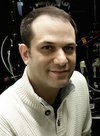
Seminar on "Dendritic synaptic integration in striatal spiny projection neurons and Huntington’s disease"
By Joshua Plotkin
Assistant Professor, Department of Neurobiology and Behavior, Stony Brook University School of Medicine, Stony Brook, NY, USA
When: Monday 24th October 2016 at 13:15 – 14:00
Where: The Biomedicine Auditorium, building 1170, 3rd floor, room 347, Ole Worms Allé, 8000 Aarhus C
Speaker host: Group Leader Anders Nykjær, DANDRITE, Dept. Biomedicine, Aarhus University
Abstract
Huntington’s disease (HD) is an autosomal dominant neurodegenerative disorder presenting motor, cognitive and psychiatric deficits. Among the most vulnerable neuronal populations in HD are striatal spiny projection neurons (SPNs), key components of the basal ganglia circuitry governing action selection and motor learning. In recent years, the vulnerability of SPNs in HD has been attributed to a loss of cortically supplied brain-derived neurotrophic factor (BDNF). In my seminar I will discuss work we have done to elucidate the mechanisms governing SPN dendritic synaptic integration and plasticity. I will then discuss how SPN glutamatergic synaptic plasticity is lost in a synapse-specific manner in mouse models of HD. The loss of synaptic plasticity is due to impaired BDNF signaling through postsynaptic TrkB receptors, but surprisingly not diminished BDNF production or release. I will present data showing that synaptic plasticity can be rescued, and propose an alternative strategy to BDNF replacement as a potential treatment for HD.
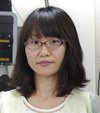
Seminar on "Dendritic Filtration of Presynaptic Cell Assembly"
By Tomoe Ishikawa
Laboratory of Chemical Pharmacology, Graduate School of Pharmaceutical Sciences, University of Tokyo, Tokyo, Japan
When: Wednesday 6th July 2016 at 11:30 – 12:30
Where: The Biomedicine Auditorium, building 1170, 3rd floor, room 347, Ole Worms Allé, 8000 Aarhus C
Speaker host: Group Leader Keisuke Yonehara, DANDRITE, Dept. Biomedicine, Aarhus University
Abstract
Neuronal dendrites collect excitatory synaptic inputs from presynaptic neurons and convey them to the soma. During this intracellular processing, dendrites perform complex computations through their nonlinear electrical properties. Previous reports have suggested that the dendritic computations are influenced by the spatiotemporal patterns of excitatory synaptic inputs. However, due to the technical limitation, the strict relationship between the pattern of synaptic inputs and the somatic excitation is poorly understood. We developed functional multi-spine calcium imaging, which allows us to en masse visualize synaptic inputs to hundreds of spines in a single neuron with single synapse resolution. Using a Nipkow-disk confocal microscope, we imaged dendrites of CA3 pyramidal cells in organotypic hippocampal slices at 100 Hz in a confocal field of approximately 150×150 μm2. We discovered that approximately half of the excitatory synaptic inputs failed to excite the cell body. Some subsets of synchronous synaptic activity were preferably passed to the cell body, whereas others were more likely to be filtered out, suggesting that dendrites carry inputs from specific cell ensembles. This screening of synaptic activity resulted from local GABAergic inhibition, and intracellular perfusion with a GABA A receptor inhibitor increased the event frequency of EPSCs in the cell body. These data suggest that presynaptic network activity is preserved on dendritic branches within a single neuron and only specific combinations of synchronized synaptic inputs have the impact on the soma.

Seminar on "Comprehensive approach to understand pathophysiological role of genes causing neurodevelopmental disorders"
By Koh-ichi Nagata
Institute for Developmental Research, Departments of Molecular Neurobiology, Kasugai, Japan
When: Thursday 30th June 2016 at 10:15 – 11:00
Where: The Biomedicine Auditorium, building 1170, 3rd floor, room 347, Ole Worms Allé, 8000 Aarhus C
Speaker host: Ernst-Martin Füchtbauer, Dept. Molecular Biology and Genetics, Associate Investigator at DANDRITE, Aarhus University
Abstract
While many different biological causes have been implicated in the etiologies of neurodevelopmental disorders such as autism-spectrum disorders and intellectual disability (ID), genetic factors are considered to be the most important. It is thus essential to clarify the physiological and pathophysiological significance of respective disease-related gene products in the brain development and diseases, respectively. To address this issue, we have established an analytical battery containing in utero electroporation-based ex vivo observations (cortical neuron migration, axon elongation, dendrite development, spine morphogenesis and live-imaging) and in vitro cell biological and biochemical analyses.
Here we focus on SIL1 and RBFOX1 gene abnormalities. SIL1 encodes an endoplasmic reticulum resident cochaperone, and is a causative gene for Marinesco-Sjogren syndrome, a rare autosomal recessive disorder with ID. RBFOX1 (aka A2BP1 or FOX1) encodes a neuron-specific splicing factor regulating neuronal splicing networks, and has recently been identified as a “hub” in the autism gene transcriptome network. By comprehensive analyses with the analytical battery, gene abnormalities of SIL1 and RBFOX1 were found to cause structural and functional defects in the cerebral cortex, and supposed to contribute to emergence of the clinical symptoms of neurodevelopmental disorders.

Seminar on "α-synuclein detection from various biological samples: a potential biomarker in Parkinson’s disease"
By Laura Parkkinen
Group leader and Senior research fellow, Oxford Parkinson’s Disease Centre and Nuffield Dept. Clinical Neurosciences, University of Oxford, UK
When: Friday 17th June 2016 at 15:00 – 16:00
Where: The Biomedicine Auditorium, building 1170, 3rd floor, room 347, Ole Worms Allé, 8000 Aarhus C
Speaker host: Group Leader Poul Henning Jensen, DANDRITE, Dept. Biomedicine, Aarhus University
Abstract
We want to develop a reliable, minimally invasive, safe, in vivo diagnostic biomarker for Parkinson’s disease (PD) and other synucleinopathies which reflects the underlying changes in the brain and will allow assessment of risk of developing disease and evaluation of effectiveness of neuroprotective therapies. Intracellular aggregation of α-synuclein (aSYN) in the brain is a key pathological hallmark of PD but finding aSYN accumulation also in more accessible tissues such as cerebrospinal fluid (CSF), olfactory and colonic mucosa has made this an attractive potential biomarker.
Discovery cohort from the Oxford Parkinson's Disease Centre (OPDC) is an ongoing, prospective, longitudinal study investigating clinical and molecular characteristics of early PD. We have screened almost 1300 participants [879 PD, 259 healthy controls, 140 'at risk' patients with REM sleep behaviour disorder (RBD)] to identify those having previously undergone a colonic biopsy (18%) and obtained tissue from 51 PD patients and 21 controls. These were stained for antibodies (Ab) for phosphorylated and total aSYN and for neuronal marker; calretinin. In addition, we adapted two novel in situ techniques i.e. paraffin embedded tissue (PET) blot and proximity ligation assay (PLA) to detect synaptic and oligomeric species of aSYN, respectively. Furthermore, we exploited the misfolding propensity of aSYN to adapt the real-time quaking-induced conversion (RT-QuIC) assay to detect pathological aSYN in the brain and CSF from patients with synucleinopathies. The aSYN RT-QuIC assay was developed using brain tissues from patients with clinico-pathological diagnosis of DLB, Alzheimer’s disease (AD), sporadic Creutzfeldt-Jakob disease and controls. Next, an exploratory set of 99 in vivo CSF samples obtained from a large, longitudinal, clinico-pathological OPTIMA study were analysed to investigate the performance of the aSYN RT-QuIC. The final validation phase was carried out in vivo CSF samples derived from the OPDC Discovery cohort i.e. 20 PD, 15 controls and 3 ‘at-risk’ patients with RBD.
Using phosphorylated aSYN-Ab, the pathological deposition of aSYN in nerve cell processes was encountered in the colonic biopsies in 12 PD patients (24%) and 2 controls (10%). Using total aSYN-Ab, no staining was seen in controls but aSYN pathology was only seen in 6 PD patients (12%). PET blot improved sensitivity to 44% but the staining pattern observed was rather diffuse and difficult to quantify. Using fluorescent double-labelling of aSYN-PLA with calretinin, we detected two distinct types of oligomeric aSYN signal i.e. diffuse and cellular that did not correlate with each other. ROC curve analysis showed that neither was a reliable predictor of clinical status. RT-QuIC however detected aSYN aggregation in PD and DLB CSF with sensitivities of 95% and 92%, respectively and with an overall specificity of 100% when compared to AD and control CSF. Patients with neuropathologically confirmed tauopathies (progressive supranuclear palsy or corticobasal degeneration) gave negative responses. Interestingly, all three ‘at risk’ RBD patients had a positive RT-QuIC response suggesting that this test could be potentially used as an early diagnostic test for prodromal PD. No correlation was found between total CSF α-synuclein measured by ELISA and RT-QuIC kinetics.
aSYN-IHC in colonic biopsies as a diagnostic biomarker of PD has low sensitivity and specificity. aSYN-PLA provides a more easily quantifiable signal than aSYN-PET, but even this technique did not reliably distinguish between PD patients and controls. Our aSYN-RT-QuIC results however were very promising providing a significant improvement on current ELISA techniques and offering a potentially valuable biomarker approach to the early clinical assessment of α-synucleinopathies.

Seminar on "Ion Channel Clustering in the Axon Initial Segment Revealed by Super-Resolution Imaging"
By Camilla Stampe Jensen
Dept. Biomedical Sciences, The Panum Institute, University of Copenhagen, Denmark
When: Wednesday 15th June 2016 at 13:15 – 14:00
Where: The Conference room, building 3130, 3rd floor, Gustav Wieds Vej 10C, 8000 Aarhus C
Speaker host: Group Leader at DANDRITE Poul Nissen, Aarhus University
Abstract
The axon initial segment (AIS) is a highly specialized subdomain of neurons defined by its dense enrichment of voltage-gated sodium (Nav) and potassium (Kv) channels. Forming the interface between the cell body and the axonal branch, the AIS serves two essential functions; 1) to initiate the electrical impulses which underlie the communicative abilities of neurons, and 2) to maintain the axon-dendrite polarity of the cell. Interestingly, while much has been learned regarding the identity and functional implication of the proteins expressed in the AIS, little is known on how they are structurally organized and regulated. Here, we have investigated ion channel clustering in the AIS of cultured hippocampal neurons by structured illumination microscopy (SIM). In line with recent findings, we first uncovered the existence of a subcortical periodic stripe pattern for the cytoskeletal proteins; actin and ankyrin G. Further, by use of two-color SIM, we find that the periodic stripe pattern present in AIS is composed of alternating actin and ankyrin G. Whereas the localization of Nav channels occur in a stripe pattern that follows the signal from ankyrin G, we find that the AIS localization of Kv2.1 channels occurs in high-density clusters merged between the ankyrin G stripes. We are currently expanding the work to include more AIS enriched ion channels to provide new insight into the nano-scale architecture of this functionally important neuronal subdomain.

Seminar on "Mechanistic insights on DNA replication and repair by cryo-EM"
By Rafael Fernández Leiro
MRC Laboratory of Molecular Biology
Cambridge Biomedical Campus, CB2 0QH
Cambridge, United Kingdom
When: Tuesday 31st May 2016 at 10:15 – 11:00
Where: The iNANO Auditorium (building 1593, basement level, room 012), Gustav Wieds Vej 14, 8000 Aarhus C
Speaker host: Group Leader at DANDRITE Poul Nissen, Aarhus University
Abstract
New advances in cryo-electron microscopy (cryo-EM) have opened the window to near atomic resolution structures of much smaller and challenging biological systems. Thanks to the development of methods that can deal with compositional and conformational heterogeneity, also transient and highly dynamic complexes can now be studied. I have used cryo-EM to study how the bacterial DNA replication and mismatch repair machineries work and regulate their function. I will discuss what we have learnt from these studies and the new opportunities that cryo-EM offers to structural biology research.

Seminar on "Life’s ups and downs: elevator mechanisms in transporter biology"
By Dr. Joseph Mindell
Senior Investigator, Membrane Transport Biophysics Section, National Institute of Neurological Disorders and Stroke (NINDS), National Institutes of Health (NIH), Maryland, USA
When: Friday 20th May 2016 at 12:00 – 13:00
Where: The iNANO Auditorium (building 1593, basement level, room 012), Gustav Wieds Vej 14, 8000 Aarhus C
Speaker host: Group Leader at DANDRITE Poul Nissen, Aarhus University
Abstract
Secondary transporters use alternating access mechanisms to couple uphill substrate movement to downhill flux of a coupling ion, presenting binding sites alternately to either side of the membrane. Most known transporters utilize a “rocking bundle” motion, where the protein moves around an immobile substrate binding site to regulate ingress. However, one protein, the glutamate transporter homolog GltPh translocates its entire substrate binding site vertically across the width of the membrane, a so-called “elevator” mechanism. Here we examine an unrelated transporter, the Na+/succinate transporter VcINDY. With the crystal structure of an inward facing state of VcINDY as a template, we used the “repeat swap” approach to computationally predict the structure of the outward-facing state of the transporter. Our model suggests that VcINDY undergoes a substantial elevator-like movement to transfer its substrate binding site, with a vertical translation of ~15 Å and a rotation of ~43o. Crosslinks formed between three different pairs of introduced cysteine residues, proximate only in the outward-facing state, confirm this large-scale motion. These crosslinks completely inhibit transport, demonstrating that such movement is essential for transport. In contrast, multiple crosslinks across the VcINDY dimer interface preserve transport function, revealing an absence of large scale coupling between VcINDY protomers.

Seminar on "Molecular Characterization of PICH Interactome in Mitosis”
By Ganesh Pitchai
From Ian Hickson’s group at Center for Protein Research
When: Tuesday 3rd May 2016 at 14:00 – 15:00
Where: Meeting room 5 (building 3140, room 114), Gustav Wieds Vej 10, 8000 Aarhus
Speaker host: AIAS Fellow and Team Leader at DANDRITE Magnus Kjærgaard, Aarhus University

Seminar on "Single-molecule techniques for studying the aggregates of proteins associated with Parkinson’s and Alzheimer’s disease"
By Mathew H. Horrocks
Dept. of Chemistry, University of Cambridge, UK
When: Monday 18th April 2016 at 15:00 – 16:00
Where: The AIAS Auditorium, building 1632, Høegh-Guldbergs Gade 6B, 8000 Aarhus C
Speaker host: AIAS Fellow and Team Leader at DANDRITE Magnus Kjærgaard, Aarhus University
Abstract
The pathological hallmark of Parkinson’s and Alzheimer’s disease is the presence of insoluble protein deposits in the brain, which are formed when specific protein molecules misfold and aggregate into highly ordered fibrils. Rather than the fibrils themselves being toxic, evidence now points towards the smaller, soluble oligomers formed in the initial stages of the process as being the culprit. It is vitally important to characterise these oligomers and determine how they are formed; however, they are highly heterogeneous, and present in much lower concentrations than either monomeric or fibrillar protein, making them difficult to study using traditional techniques. It is therefore advantageous to use single-molecule methodologies to study the processes involved in their formation and conversion into the less toxic fibrils. We have developed new methods for imaging and characterizing these important aggregates, and have applied them to studying them both in vitro and in biofluids.

Seminar on "NMX – A Macromolecular Diffractometer at the European Spallation"
By Esko Oksanen
Instrument Scientist - Neutron Macromolecular Crystallography, European Spallation Source ERIC, Lund, Sweden
When: Monday 14th March 2016 at 11:30 – 12:30
Where: Conference room 303, building 3130, 3rd floor, Aarhus University, Dept. Molecular Biology and Genetics, Gustav Wieds Vej 10C, 8000 Aarhus C
Speaker host: Group Leader Poul Nissen, DANDRITE, Dept. Molecular Biology and Genetics, Aarhus University
Abstract
Neutron crystallography is the most unambiguous way of determining the hydrogen positions in biological macromolecules, but it remains experimentally very challenging due to the low brightness of the existing neutron sources and the small number of dedicated neutron instruments. The European Spallation Source (ESS) is a European project to build the world’s brightest neutron source in Lund, Sweden. One of the first instruments planned at this facility is the NMX macromolecular diffractometer. The NMX instrument is a time-of-flight (TOF) quasi-Laue diffractometer optimised for small samples and large unit cells in order to locate the hydrogen atoms relevant for the function macromolecules.
The ESS long pulse source with its highly brilliant neutron moderator is ideally suited for a macromolecular diffractometer. We estimate that a macromolecular diffractometer at the ESS could be used to collect data from crystals of ~200 µm dimension in some days, which represents an order of magnitude improvement over currently available sources. More importantly it broadens the range of systems that can be investigated to many biologically very interesting molecules, including membrane proteins such as proton pumps.
One of the limiting factors with current neutron instruments is that the fixed detector geometry only allows a maximal unit cell edge of ~150 Å to be resolved without a compromise in the diffraction resolution (dmin). The NMX detectors will be mounted on robotic arms, allowing larger unit cells to be resolved by increasing the crystal-to-detector distance. This incurs an increase in the data collection time, but reflections to the same dmin can still be observed by moving the detectors. Many of the scientifically most interesting systems, such as proton pumping membrane proteins, crystallise in large unit cells, so being able to resolve a large unit cell edge is a unique advantage. The combination of a neutron flux higher than leading high flux reactor instruments, such as LADI-III, together with the ability to resolve large unit cells and the ability to separate signal from background by time-of-flight leads to world-leading performance particularly with the experimentally most challenging systems. This would transform neutron crystallography into a technique that could answer a significantly larger number of hydrogen related questions in biomolecular science than before.

Seminar on "The Saposin lipoprotein nanoparticle system for membrane proteins"
By Jens Frauenfeld
Salipro Biotech AB, Södertälje, Sweden
When: Wednesday 24th February 2016 at 14:15 – 15:00
Where: Conference room 303, building 3130, 3rd floor, Aarhus University, Dept. Molecular Biology and Genetics, Gustav Wieds Vej 10C, 8000 Aarhus C
Speaker host: Group Leader Poul Nissen and Joseph Lyons, DANDRITE, Dept. Molecular Biology and Genetics, Aarhus University
Abstract
Jens Frauenfeld, Robin Löving, Jean-Paul Armache, Andreas Sonnen Fatma Guettou, Per Moberg, Lin Zhu, Caroline Jegerschöld, Ali Flayhan, John A.G. Briggs, Henrik Garoff, Christian Löw, Yifan Cheng, Pär Nordlund
Membrane proteins are of outstanding importance in biology and drug development. However, membrane proteins are difficult to study due to their instability and tendency to aggregate when extracted from their natural lipid bilayer environment. In order to maintain their integrity, an artificial hydrophobic environment is needed. Detergent micelles are commonly used to solubilize membrane proteins, but often have adverse effects on protein activity, stability and solubility, and can interfere with the experimental set-up. Here, we present a Saposin-lipoprotein nanoparticle system, Salipro, which allows for the reconstitution of membrane proteins into a lipid environment that is stabilized by a scaffold of Saposin proteins. The Salipro system allows for the incorporation of a variety of lipids, pro-/eukaryotic membrane proteins and viral antigens such as the HIV-spike into homogenous and soluble lipoprotein complexes.
We showcase the applicability of the method on prokaryotic and eukaryotic membrane proteins as well as by the direct solubilization and nanoparticleincorporation of a viral membrane protein complex from the virus membrane.
Our approach facilitates high-resolution structural studies of membrane proteins by single-particle electron cryo-microscopy (cryo-EM) and allows to stabilize the HIV-envelope glycoprotein in a functional state. The Salipro system provides a novel versatile nanoparticle platform for membrane proteins and may offer a wide range of potential applications, ranging from structural biology to the discovery of new pharmacological agents as well as the therapeutic delivery of protein-based therapeutics and vaccines.
Contact: jens.frauenfeld@salipro.com

Seminar on "Molecular and cellular signature of neuronal cells affected by genetic and environmental factors of major mental illnesses"
By postdoctoral candidate Eleonora Passeri
Department of Psychiatry and Behavioral Sciences, Johns Hopkins Hospital, School of Medicine, Baltimore, MD
When: Thursday 4th February 2016 at 11:00 – 12:00
Where: room 340, building 1170, 3rd floor, Aarhus University, Dept. Biomedicine, Ole Worm’s Allé 3, 8000 Aarhus C
Speaker host: Group Leader Mark Denham, DANDRITE, Dept. Biomedicine, Aarhus University
Abstract
The novel technology of induced neuronal cells (iN cells) is promising for translational neuroscience, as it allows the direct conversion of human fibroblasts into cells with post-mitotic neuronal traits. However, a major technical barrier is the low conversion rate. To overcome this problem, we optimized the conversion media. Using our improved formulation, we studied how major mental illness-associated chromosomal abnormalities may impact the characteristics of iN cells. Specifically, we generated human iN cells from peripheral fibroblasts of healthy individuals and patients with genetically-defined brain disorders such as childhood-onset schizophrenia with disease-associated copy number variations. We demonstrated that our new iN cell culture protocol enabled us to obtain more precise measurement of neuronal cellular phenotypes than previous iN cell methods.
Furthermore, this iN cell culture provided us a unique platform to efficiently investigate Toxoplasma gondii infection in human neurons. Toxoplasma gondii is a protozoan parasite capable of establishing persistent infection within the brain. Serological studies in humans have linked exposure to Toxoplasma to neuropsychiatric disorders. However, serological studies have not elucidated the related molecular mechanisms within neuronal cells. Parasite infection in control and childhood-onset schizophrenia patients was characterized by differential detection of tachyzoites and tissue cysts in iN cells. This approach may aid study of molecular mechanisms underlying individual predisposition to Toxoplasma or other infectious agents linked to neuropathology of brain disorders.

Seminar on "The role of Rap1 GTPases during neuronal polarization and cortical development"
By postdoctoral candidate Bhavin Shah
Institute of Molecular Cell Biology, University of Münster, Germany
When: Monday 25 January 2016 at 11:15 – 12:00
Where: room 240, building 1170, 2nd floor, Aarhus University, Dept. Biomedicine, Ole Worm’s Allé 3, 8000 Aarhus C
Speaker host: Group Leader Keisuke Yonehara, DANDRITE, Dept. Biomedicine, Aarhus University
Abstract
During the development of the mammalian neocortex, the generation of neurons by neural progenitors and their migration to the final position are closely coordinated. The highly polarized radial glial cells (RGCs) serve both as progenitor cells to generate neurons and as support for the migration of these neurons. After their generation, neurons transiently assume a multipolar morphology before they polarize and begin their migration along the RGCs.
Here,we show that Rap1 GTPases perform essential functions for cortical organization as master regulators of cell polarity.
Conditional deletion of Rap1 GTPases leads to a complete loss of cortical lamination. In RGCs, Rap1 GTPases are required to maintain their polarized organization. In newborn neurons, the loss of Rap1 GTPases prevents the formation of axons and leading processes and thereby interferes with radial migration.
Taken together, the loss of RGC and neuronal polarity results in the disruption of cortical organization.

Seminar on "Structure-based discovery of antagonists for GluN3-containing NMDA receptors"
By Trine Kvist Carlino
Postdoctoral fellow, Faculty of Health and Medical Sciences, University of Copenhagen
When: Wednesday 2 December 2015 at 14:15-15:00
Where: Conference room, building 3130, 3rd floor, Aarhus University, Dept. Molecular Biology and Genetics, Gustav Wieds Vej 10C, 8000 Aarhus C
Speaker host: Team Leader Hanne Poulsen, DANDRITE, Dept. Molecular Biology and Genetics, Aarhus University
Abstract
Modulators of NMDA receptors have been investigated and developed for decades as potential therapeutic agents, but only few (e.g. ketamine an anesthetic drug and memantine used in the treatment of Alzheimer’s disease) are approved for clinical use. The narrow window between therapeutic and adverse effects has limited the use of antagonists that broadly inhibits NMDA receptor subtypes. Due to the widespread low-level expression of the GluN3 subunits and their modulatory role, specific regulation of the GluN3-containing NMDA receptor subtypes may be better tolerated than modulation of the more predominantly expressed diheteromeric GluN1/N2 receptor subtypes. GluN3-containing NMDA receptors are involved in important physiological functions of the brain, where they are reported to affect synapse maturation, synaptic plasticity, and neuroprotection. However, knowledge is lacking on the pharmacology, regulation, and function of GluN3-containing NMDA receptors.
Our group has developed a method to study the pharmacology of GluN3 subunits in recombinant diheteromeric GluN1/N3 receptors by mutating the orthosteric ligand-binding pocket in GluN1 and expressing the receptors in Xenopus oocytes. This method is suitable for performing compound screening and characterization of structure-activity relationship studies on GluN3 ligands. With this in hand we performed a virtual screen of the orthosteric binding site of GluN3A in the search for antagonists with selectivity for GluN3 subunits. In the subsequent pharmacological evaluation of 99 selected compounds using two-electrode voltage-clamp electrophysiology, we identified the first antagonists with preference for the GluN3 subunit. These findings demonstrate that structural differences between the orthosteric binding site of GluN3 and GluN1 can be exploited to generate selective ligands.

Seminar on "Cilium - a Unique Subcellular Compartment that Functions as a Signal Detection Device"
By Dr Jarema Malicki
Reader in Developmental Genetics, Department of Biomedical Science, The University of Sheffield, United Kingdom
When: Thursday 19 November 2015 at 14:00-15:00
Where: Aud. 6, 3rd floor, building 1170, Aarhus University, Ole Worms Allé 3, 8000 Aarhus C
Speaker host: Olav Andersen, Affiliated Researcher at DANDRITE, Aarhus University
Abstract
Cilia form a morphologically distinct polarized compartment on the surface of cells. Their function is intimately associated with at least five aspects of vertebrate biology: early embryonic patterning, the differentiation and function of sensory neurons, morphogenesis and physiology of duct epithelia, cell motility and metabolism. Cilia defects result in many human abnormalities ranging from aberrations of left-right asymmetry to blindness.
The function of cilia requires efficient transport of many specialized tissue-specific proteins both into an inside the ciliary compartment. One of the main interests of the Jarema Malicki laboratory are mechanisms that transport proteins in cilia, including microtubule-dependent motors and their interactions with proteins that mediate signal transduction such as transmembrane receptors. The laboratory exploits several parallel experimental approaches, including genetic analysis in the zebrafish model, imaging and genetic manipulation of mammalian tissue culture cells, and, more recently, proteomics and imaging of cilia in an unicellular organism, Tetrahymena.

Seminar on "The Danish BioImaging Network/Imaging resources at the CPR and Danstem Imaging Platform"
By Jutta Bulkescher
Microscopy Specialist, Novo Nordisk Foundation Center for Protein Research/Danish Stem Cell Center, University of Copenhagen
When: Thursday 19 November 2015 at 10:15-11:00
Where: Aud. 6, 3rd floor, building 1170, Aarhus University, Ole Worms Allé 3, 8000 Aarhus C
Speaker host: Poul Nissen and Keisuke Yonehara, Group Leaders at DANDRITE, Aarhus University
Abstract
The Danish BioImaging Network
The Network will provide information on microscopy instrumentation/imaging technologies/analysis software and staff expertise from all places/institutes in Denmark on a common homepage.
The Imaging Platform at the Center for Protein Research (CPR) and Danish Stem Cell Center (Danstem)
Advanced light microscopy is a key technology at CPR and Danstem by enabling researchers to visualize and measure dynamics, function and localization in cells and tissues.
The Imaging Platform supports all CPR and Danstem scientists with top-level instrumentation for confocal-, widefield-, and high-content/high-throughput imaging as well as in-house support and training for microscopy and quantitative image analysis.

Seminar on "Single molecule imaging and tracking of neurotrophins and their receptors in living neuronal cells"
By Laura Marchetti
Postdoc at The Scuola Normale Superiore, Pisa, Italy
When: Thursday 29 October 2015 at 10:15-11:00
Where: Aud. 6, 3rd floor, building 1170, Aarhus University, Ole Worms Allé 3, 8000 Aarhus C
Speaker host: Anders Nykjær, Group Leader at DANDRITE, Aarhus University
Abstract
We currently lack a satisfactory understanding of the membrane complexes and internalization routes underpinning the pleiotropic biological outcomes of neurotrophins (NTs), which exert their functions via interlaced binding of three different families of neurotrophin receptors (NRs). We are working to answer several open questions in this field: are NRs membrane movements linked to ligand-specific activation processes? Are different receptor functions linked to different movements at the cell membrane? How does p75NTR enhance NGF-TrkA signalling? Are NGF and its precursor proNGF different signalling molecules as far as NRs binding and internalization is concerned?
To address these issues, we developed non-invasive means to covalently fluorolabel with 1:1 stoichiometry both neurotrophins and their receptors. This toolbox was exploited to perform single molecule imaging and tracking (SMIT) at the plasma membrane and inside axons of living neuronal cells using wide-field and TIRF microscopy.
We have so far obtained results in three different directions. First, we gained clues about TrkA membrane mobility and oligomerization state upon binding of four different NTs. We proved that ligand binding shifts TrkA monomer-dimer equilibrium towards the dimer form, and causes the appearance of immobile clustered forms; however the extent of such changes in dynamics is strictly ligand-dependent. We also generated different TrkA mutants allowing for the dissection of three different receptor functions: kinase activity, recruitment of intracellular effectors, ubiquitination and further degradation. Our data point to kinase activity as a master regulator of TrkA membrane dynamics and hint at possible mechanisms by which the cell handles the trafficking of kinase-inactive TrkA receptors. Second, we developed a system for the stable inducible expression of TrkA and p75NTR constructs in living cells, which can be exploited for a dual-color labelling procedure and subsequent simultaneous SMIT of the two receptors. Last, we undertook a comparative study about the axonal transport displayed by “homologue” fluorescent proNGF and NGF in compartmented DRG neurons. We demonstrated that proNGF is internalized and retrogradely transported across axons like mature NGF, but the two NTs display remarkable differences both in terms of NTs flux and number of molecules carried per vesicle. Furthermore, we unveiled a competition mechanism favoring NGF transport upon coadministration of the two NTs.
SMIT analysis is a powerful method to study NTs-NRs membrane dynamics and internalization routes. We are currently optimizing our TIRF setup to get the quantitative description of the kinetics, dynamics and stoichiometry of any molecular complex formed upon proNTs or NTs binding to NRs.
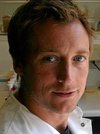
Seminar on "A genome-wide in vivo RNAi screen in Drosophila identifies regulators of cholesterol-dependent steroid production"
By Kim Furbo Rewitz
Associate professor, Cell- and Neurobiology, University of Copenhagen
When: Tuesday 20 October 2015 at 11:00-11:45
Where: Conference room (1170-248), Aarhus University, Ole Worms Allé 3, 8000 Aarhus C
Speaker host: Anne von Philipsborn, Group Leader at DANDRITE, Aarhus University
Abstract
During development steroid signaling induces a switch from juvenile growth to sexual maturation. This is a tightly controlled process, requiring the assessment of checkpoints depending on nutrient levels and growth status to decide whether to release steroids that trigger maturation or continue juvenile development. Progression to the adult stage only occurs once the developmental timing program is aligned with checkpoints that activate neuroendocrine circuits promoting maturation-inducing steroid pulses. This flexibility allows animals to reach a genetically predetermined body size under different nutritional conditions by adjusting the duration of the juvenile growth period. The two important parameters are growth rate, controlled by insulin/IGF, and the duration of growth, determined by the release of steroids. To coordinate growth and maturation, insulin/IGF therefore converges on the neuroendocrine system to control timing of steroid release.
The basic strategy for regulating steroid signaling and the timing maturation is remarkably conserved in metazoans, from flies to humans. By using the genetic model system Drosophila, we aim to uncover cellular mechanisms and neuroendocrine circuits required for the regulation of steroid signaling. We aim to uncover cellular mechanisms and neuroendocrine circuits required for the regulation of steroid signaling. We are currently using molecular genetic approaches in combination with genome-wide RNAi, transcriptomic and proteomic strategies. Given the high degree of conservation, we believe that genetic studies on Drosophila will provide fundamental insight that may provide a paradigm for understanding how diseases, including metabolic disorders like obesity and diabetes, affect steroid signaling and timing of puberty in humans.

Seminar on "The biophysical basis of the high-bandwidth information encoding in cortical neurons"
By Andreas Neef
MPI for Dynamics and Self-Organization and BCCN group ‘Biophysics of neural information encoding’, Göttingen, Germany
When: Thursday 20 August 2015 at 15:15-16:00
Where: Aud. 6, 3rd floor, building 1170, Aarhus University, Ole Worms Allé 3, 8000 Aarhus C
Speaker host: Poul Nissen, Group Leader at DANDRITE, Aarhus University
Abstract
A cerebral neuron receives a continuously fluctuating input through thousands of synapses. It encodes and relays this input to thousands of downstream neurons using action potentials. Therefore, the dynamics with which discrete action potentials are generated in response to a continuous input, represents a fundamental bottleneck for the flow of information in neural populations. In the last decade it became clear that the bandwidth of information encoding in neural populations in the cerebral cortex is much higher than previously predicted by simulations with conductance based models. The biophysical basis of this large bandwidth is not understood, as even basic parameters such as sodium channel surface density and kinetics are still under debate. We used high resolution electrophysiology and fluorescence microscopy to quantify sodium channel properties and distributions in neurons and relate them to the ability to encode information with a high bandwidth.
A precise characterization of sodium channel properties in the cell bodies of cortical pyramidal cells allowed us to conclude that each square micrometer contains 20 to 30 sodium channels. By combining current clamp and immunofluorescence in cultured hippocampal neurons we could achieve semi-quantitative fluorescence labelling and obtain estimates for the axonal density of sodium channels.
We found the bandwidth of information encoding to be similar between cultured neurons and neurons in slices. Using cultured neurons as a model system, we studied the maturation of neuronal properties in the first weeks in culture. In parallel to the increased bandwidth, other neuronal properties changed: the axonal sodium channel density, the dendritic morphology and the sub-micrometer organization of axon initial segment structure. The presentation details, how those properties influenced the bandwidth of information encoding.

Seminar on "Illuminance-dependent variability in response properties of retinal ganglion cells"
By Katja Reinhard
Centre for Integrative Neuroscience, University of Tübingen, Tübingen, Germany
When: Thursday 14 July 2015 at 11:00-12:00
Where: Aud. 6, 3rd floor, building 1170, Aarhus University, Ole Worms Allé 3, 8000 Aarhus C
Speaker host: Keisuke Yonehara, Group Leader at DANDRITE, Aarhus University
Abstract
The retina is exposed to a highly dynamic visual environment with both rapid and slow modulations in contrast and ambient brightness. Despite these dynamics of the visual input, we perceive a given stimulus very similarly, independently of whether we see it under dim or bright conditions. It is therefore conceivable that the retina is sending very similar signals to the brain when viewing the same scene, irrespectively of the ambient brightness.
One of the most basic properties of ganglion cells – the output neurons of the retina – is their response polarity, i.e. ON-ganglion cells respond to light increments, and OFF-ganglion cells to light decrements. The polarity of ganglion cells has been thought to be “hardwired” and clear-cut, such that the retina provides the visual system with a stable representation of light increments and decrements. Surprisingly, we found that the polarity of ganglion cells is not stable, but strongly modified by changes in the ambient brightness. The majority of mouse OFF-ganglion cells recorded by multi-electrode arrays did not only respond to light decrement but, at various light levels, also to increment, while most ON-ganglion cells also responded to light decrements at specific ambient light levels. These response changes could occur at any tested light level, but were bound to the respective ambient brightness. Further, we confirmed this variability in ganglion cell output in response to different stimuli, in pig retina, and in in-vivo recordings of the LGN.
These findings do not only question the basic assumption of hardwired response polarities in ganglion cells, but have implications on 1) functional classification of sensory neurons, 2) questions of neuronal coding and the ability of the brain to deal with variability in the output of sensory organs, and 3) the need of cell type specificity of treatments against blindness.

Seminar on "Understanding and Controlling Human Pluripotent Stem Cell Renewal and Differentiation with Materials"
By Kouichi Hasegawa
Institute for Integrated Cell-Material Sciences, Kyoto University, Japan
When: Thursday 18 June 2015 at 13:00-14:00
Where: Aud. 6, 3rd floor, building 1170, Aarhus University, Ole Worms Allé 3, 8000 Aarhus C
Speaker host: Mark Denham, Group Leader at DANDRITE, Aarhus University
Abstract
Chemically defined conditions for large-scale production and quality-control of human pluripotent stem cells (hPSCs including ES and iPS cells) is required for their application in transplantation therapies and drug screening. However, little is known about the molecular mechanisms of hPSC self-renewal, which impairs the identification of targets for applying chemical compounds to develop a chemically-defined culture system. Two growth factors bFGF and TGFβ are believed to be necessary extrinsic signaling molecules for hPSC self-renewal. Indeed most of the available culture systems include these growth factors. However, the molecular function of bFGF and TGFβ in the regulation of hPSC transcriptional networks and self-renewal are still poorly understood, and there are no compounds that can substitute for these factors. In a hypothesis driven small chemical library screening approach, we have identified novel signaling cascades and chemical compounds that regulate hPSC self-renewal and differentiation. Utilizing these compounds, we have developed a growth factor-free hPSC defined culture medium in which only 2 proteins are required. We have also developed a novel sphere culture system with 2 polymers instead of using recombinant protein matrixes. These medium and culture system will dramatically reduce the cost of hPSC research and applications, and may generalize hPSC therapies in future.

Seminar on "Single-molecule studies of the replisome structure and dynamics"
By Arek Kulczyk
Harvard University, Dept. Biological Chemistry and Molecular Pharmacology, Boston, Massachusetts, USA
When: Thursday 30 April 2015 at 13:15-14:00
Where: The iNANO Auditorium, The Interdisciplinary Nanoscience Center, Aarhus University, building 1593, Gustav Wieds Vej 14, 8000 Aarhus C
Speaker host: Arne Möller, Team Leader at DANDRITE and Assistant Professor at iNANO, Aarhus University
Abstract
We present the first structures of a replisome assembled on DNA resembling a replication fork. The four structures determined by single-particle cryo-electron microscopy (cryo-EM) represent different functional states of the megadalton-sized bacteriophage T7 replisome. The replisome consists of DNA helicase, RNA primase, and two DNA polymerase molecules. The two molecules of DNA polymerase adopt different spatial arrangement at the replication fork reflecting their roles in leading- and lagging-strand synthesis. Structures in combination with biochemical data reveal fundamental molecular mechanisms for leading-strand synthesis, formation and release of the lagging-strand replication loop, and coordination of leading- and lagging-strand synthesis.
Using the single-molecule microscopy methods we identified interactions between the replication proteins that orchestrate exchange of DNA polymerases at the replication fork. Since mechanisms of DNA replication are highly conserved the observations are relevant to other replication systems.
In collaboration with Arne Moeller, we plan to refine structures of the replisome to high resolution using the state-of-the-art cryo-EM facility in the Interdisciplinary Nanoscience Center.

Seminar on "Attention and motor planning in the frontal cortex of primates"
By Irene Caprara
University of Rome, Italy
When: Friday 10 April 2015 at 13:15-14:00
Where: Aud. 6, 3rd floor, building 1170, Aarhus University, Ole Worms Allé 3, 8000 Aarhus C
Speaker host: Group Leader Duda Kvitsiani, DANDRITE
Abstract
The allocation of attention during saccade preparation has been studied in the last thirty years. Through the Premotor Theory of Attention (PTA), Rizzolatti and colleagues (1987) hypothesized the presence of a mechanism that can control both attention and motor planning (intention). Despite the several relevant psychophysical results in literature, which attest the uncontested connection between these two cognitive functions from a behavioral point of view, another aspect of the problem is still unclear: is there selective tuning for attention and motor planning in each neuron, or, as the PTA proposes, are these two cognitive functions indissolubly linked? On the basis of a previous work by Lebedev and colleagues (2004), which highlighted the possibility of a dissociation between two historically connected cognitive functions, working-memory and attention, we decided to adopt similar neurophysiological and analytical approaches on the study of a possible dissociation between attention and intention. The present work, then, wants to test whether neurons in the frontal cortex of primates are tuned on both of these functions, as predicted by PTA or, instead, if a selective tuning is allowed. To test this, a behavioral paradigm in which monkeys had to attend a location while planning a saccade to another, was designed, the Cocoa task. Through 20 conditions, represented by the combinations of two colored cues, an annulus and a circle, indicating respectively the location to which plan the saccade and the location to pay attention at, we were able to conduct a neurophysiological study (single neuron recordings) in the frontal cortex to assess whether a differential selectivity of cells for attention and intention existed. Despite PTA predictions, we found that covert and overt attention can be independent from a neural point of view; according to our results, as a matter of fact, monkeys were able to covertly direct attention to one location while planning a saccade to another location maintaining central fixation. Therefore, from a neural point of view, we found cells with strong selectivity only for one of the two functions, attention or intention, and some cells tuned for both; the total amount of spatially-tuned neurons, then, was classified into three categories: Motor cells, Attention cells, and Hybrid cells. The presence of this third category could act as a bridge between different interpretations: although the multitasking activity seems to justify the predictions of PTA, we showed in our study that a partial neural dissociation between attention and motor planning exists, as highlighted by the presence of selectively tuned cells.

Seminar on "Visualization of result of calcium influx through low-voltage activated calcium channels"
By Dmytro Cherepakha
National Technical University of Ukraine, Ukraine
When: Wednesday 8 April 2015 at 13:15-14:00
Where: Aud. 6, 3rd floor, building 1170, Aarhus University, Ole Worms Allé 3, 8000 Aarhus C
Speaker host: Group Leader Duda Kvitsiani, DANDRITE
Abstract
Calcium ions play one of the main roles in cell’s life. They can be second messengers in signal transduction pathways, maintain potential difference across excitable cell membranes, control calcium-activated potassium channels and activate neurotransmitter release. And in all activities one of the most important things is local concentration of calcium ion: where it will be increased, how much and for how long. For managing the Calcium concentration there are several intracellular mechanisms. Calcium concentration can be controlled by storage function of organelles like mitochondria and the endoplasmic reticulum; calcium-binding proteins like calmodulin and ion exchangers. All these mechanism are deeply involved in maintenance of cytoplasmic calcium ion concentration as well as in formatting of local calcium microdomains. Calcium concentration domains are localized sites of high calcium ion concentration in cell’s cytoplasm that can be found around the intracellular calcium channels as a result of their opening. It is a spatial domain where concentration can increase up to hundreds of micromoles. And they can be visualized by using special calcium indicators like Fluo-3 or Fluo-4 or calcium-activated photoprotein aequorin using fluorescence microscopy technique. T-type calcium channels are low-voltage activated calcium channels that open during membrane depolarization and aid in mediating calcium influx into cells after an action potential or depolarization signal. They can be activated by negative membrane potentials of about -55 mV and have small single channel conductance. However these channels have fast voltage-dependent inactivation compared to that of other calcium channels. T-type calcium channels are present in many neuronal cells within the central nervous system where they help to provide stronger and quicker depolarization and allow for more frequent depolarization events. T-type channel is important for the repetitive firing of action potentials in cells with rhythmic firing patterns such as neurons in the thalamus of the brain and cardiac muscle cells where it contributes to the rhythmic beating of the heart. Pharmacological evidence of T-type calcium channels suggest that they play a key role in diseases such as absence epilepsy, diabetes, and several forms of cancer. But the main question in all these processes associated with calcium ions, was spatial and temporal features of calcium domains. In an attempt to measure increase of spatial intracellular calcium concentration we used two techniques at the same time: whole cell patch clamp recording and calcium-dependent indicator Fluo-3 for fluorescence microscopy. In addition we used some image post-processing technique and simple mathematical model for understanding diffusion of calcium ion near the channel. Our result give us a chance to say that in neurons of lateral dorsal nucleus of thalamus of rat, as result of activity T-type calcium channels, there could be regions of high calcium concentration that are spatially separated. We saw two different type of fluorescent signal that indicate non uniform channel distribution which might be related to local functions of group of channels and dendritic plasticity.
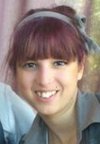
Seminar on "Pharmacological Inactivations of the mPFC in Rats Performing a Reward-Related Delayed Spatial Alternation Task and mTOR signaling in genetic mouse models for distinct autism-related behavioral domains"
By Aimilia Lydia Kalafateli
Graduate School of Life Sciences, Department of Biomedical Sciences, Utrecht University, Netherlands
When: Friday 20 March 2015 at 13:15-14:00
Where: Aud. 6, 3rd floor, building 1170, Aarhus University, Ole Worms Allé 3, 8000 Aarhus C
Speaker host: Group Leader Duda Kvitsiani, DANDRITE
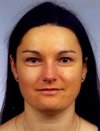
Seminar on "Interleukin-1 Regulates Adult Hippocampal Neurogenesis and Spatial Learning Independently"
By Juliane Martin
Division of Neurodegenerative Diseases, Dept. of Neurology, Dresden University of Technology, Germany
When: Monday 16 March 2015 at 13:15-14:00
Where: Aud. 6, 3rd floor, building 1170, Aarhus University, Ole Worms Allé 3, 8000 Aarhus C
Speaker host: Group Leader Duda Kvitsiani, DANDRITE
Abstract
Interleukin-1 (IL-1) has been suggested to exert a dual role in hippocampal function. Whereas physiological levels seem to be required for proper spatial memory formation, levels below or above that range have been shown to impair spatial learning. Furthermore, high levels of IL-1 are known to be detrimental to adult hippocampal neurogenesis, which has been implicated to support hippocampal function with respect to reversal spatial learning. However, whether IL-1 has also a physiological role in adult hippocampal neurogenesis and, thereby, additionally contributes to hippocampal function has not been addressed so far.
In IL-1α/β knock-out (KO) mice, more neural precursor cells are present in the subgranular zone of the dentate gyrus. This effect is accompanied by an increase in proliferation, whereas neuronal differentiation is unaffected. Interestingly, numbers of surviving immature neurons integrating eventually into the hippocampal circuitry are similar to control animals indicating an antagonizing mechanism. In the Morris water maze task, IL-1α/β KO mice display deficits in spatial learning in the first acquisition phase, but show similar performance as control mice after translocation of the platform. Qualitative analysis of applied search strategies reveals no difference between IL-1α/β KO and control mice, further supporting the observation the mice deficient for IL-1 signaling have no defects in task aspects specifically linked to new-born neurons. Thus, there seem to be multiple, independent roles of IL-1 in the hippocampus. On the one hand, it modulates adult hippocampal neurogenesis by suppressing progenitor cell proliferation, but also possibly by supporting neuronal cell survival. On the other hand, it seems to be important for proper spatial memory formation.
Seminar on "Regulation of the Ras pathway by neurofibromin in dendritic spines"
By Ana Oliveira
Center for Neuroscience and Cell Biology, University of Coimbra, Portugal
When: Friday 6 February 2015 at 12:00-13:00
Where: Aud. 6, 3rd floor, building 1170, Aarhus University, Ole Worms Allé 3, 8000 Aarhus C
Speaker host: Group Leader Keisuke Yonehara, DANDRITE
Abstract
Synaptic plasticity is thought to underlie learning and memory formation. In dendritic spines, Ras plays a critical role in many forms of synaptic plasticity and, therefore, many neuropsychiatric disorders that involve learning deficits, such as Neurofibromatosis Type I (NF1), are associated with abnormal Ras signaling. NF1 is caused by loss-of-function mutations on the Nf1 gene, which encodes neurofibromin, a Ras inactivator. While it has been shown that neurofibromin is localized in dendritic spines, its function in these subcellular compartments is not well understood.
Using a combination of fluorescence lifetime imaging microscopy (FLIM) and 2-photon glutamate uncaging, we observed that loss of neurofibromin disrupted Ras inactivation in dendritic spines of pyramidal neurons in the CA1 region of the rat hippocampus, suggesting that neurofibromin acts as a RasGAP in these subcellular compartments. Loss of neurofibromin caused sustained Ras activation in spines, which led to impairment of spine structural plasticity and loss of spines in an activity-dependent manner. In line with these findings, loss of neurofibromin also resulted in a loss of functional excitatory synapses. Taken together, our results provide evidence that postsynaptic Ras hyperactivation following loss of neurofibromin may explain, at least in part, the cognitive deficits associated with NF1.
Seminar on "Transcriptional codes that drive neuronal diversity"
By Szilard Sajgo
Retinal Circuit and Genetics Unit, National Eye Institute, National Institutes of Health (NIH), USA
When: Tuesday 3 February 2015 at 11:00-12:00
Where: Aud. 6, 3rd Floor, building 1170, Aarhus University, Ole Worms Allé 3, 8000 Aarhus C
Speaker host: Group Leader Keisuke Yonehara, DANDRITE
Abstract
The mammalian nervous system consists of a large variety of morphologically and physiologically different neurons. We are interested in the transcription factor combinatorial codes driving neuronal diversity. Such combinatorial codes have been previously described in the projection sensory neurons of the visual, auditory and somatosensory pathways of the mouse, using conditional knock-in AP reporter alleles targeted at the three members of the Pou4f family of transcription factors, Brn3a, Brn3b and Brn3c.
By using intersectional genetics and a modified Tet-ON system with dual pharmacological control of Cre I have found that Brn3b is also expressed in several of the sensory cranial nerve ganglia and some of their hindbrain relay neurons, as well as in viscero-motor and some branchio-motor output neurons of the facial, glossopharyngeal and vagus nerves.
Our group is interested in finding genes that drive neural diversity in the context of Brn3's. I participated in an effort to immuno-magnetically purify Brn3aAP/WT, Brn3aAP/KO, Brn3bAP/WT and Brn3bAP/KO positive retinal ganglion cells and analyze their expression profiles using next generation RNA sequencing. We report combinatorial expression of multiple gene families of transcription factors, adhesion molecules and cytoskeletal adaptors which have the potential to participate in a complex combinatorial code of neuronal cell type specification. To assess the in-vivo function of several newly identified RGC specific genes I am combining viral strategies with newly developed Brn3a and Brn3b conditional Cre knock in mice.
Seminar on "A novel electroporation technique to analyze fine neuronal structures in postnatal mammalian brain"
By Nami Ohmura
Division of Integrative Bioscience, Tottori University Graduate School of Medical Sciences, Japan
When: Monday 2 February 2015 at 11:00-12:00
Where: Aud. D2, 2nd floor, building 1531, room 119, Dept. Mathematics, Aarhus University
Speaker host: Group Leader Keisuke Yonehara, DANDRITE
Abstract
Mammalian brain can alter its function and neural circuits in response to sensory experience during early postnatal life. For example, monocular deprivation (MD) causes physiological loss of cortical responses to a deprived eye and anatomical retraction of geniculocortical afferents serving the de-prived eye. On the other hand, geniculocortical afferents serving an open eye show significant re-traction when cortical neurons are pharmacologically inhibited. Thus, an uncorrelated activity be-tween pre and post synaptic neurons leads to the pruning of afferent axons. To investigate the mechanisms of axonal pruning, which had been found in cats, mouse model is useful because genetic manipulation is easily available. Therefore, I determined whether pruning of thalamo-cortical axons in the inhibited visual cortex takes place in mice. I injected an anterograde neural tracer, biocytin into the lateral geniculate nucleus (LGN) and measured the density of labeled afferent axons in the visual cortex. The amount of thalamocortical axons in the pharmacologically inhibited cortex of mice showed a decrease in visual input dependent manner as observed in cats.
In these experiments, I was faced with a difficulty to analyze single axonal morphology of mouse thalamocortical afferents using conventional tracer labeling for their thinness and high density. To solve this problem, I have established a novel electroporation method to transfer genes into a few neurons in the target area which is identified electrophysiologically in in vivo postnatal animals (Ohmura et al., Brain Struct Funct. 2014). I recorded the neuronal activity to identify the location of the LGN using a glass-pipette electrode which contains the plasmid DNA encoding green fluores-cent protein (GFP). After confirming the location of the LGN by monitoring visual responses, I pressure-injected the plasmid solution into the recording site and applied voltage pulses through the glass-pipette electrode. I found a few labeled somata and dendrites in the thalamus after several days, and labeled axons in the cortex after 1-2 weeks. This technique allows visualization of the fine structure of neuronal processes of single-neuron to explore the neuronal circuit mor-phologically in various animals.
Seminar on "Optical control of NMDA-receptors with a diffusible photoswitch"
By Emilienne Repak
Dynamic Neuronal Imaging Unit, Institut Pasteur, Paris, France
When: Friday 30 January 2015 at 11:00-12:00
Where: Aud. D2, 2nd floor, building 1531, room 119, Dept. Mathematics, Aarhus University
Speaker host: Group Leader Keisuke Yonehara, DANDRITE
Abstract
The NMDA-type glutamate receptor (NMDAR) is one of the two principal glutamate receptors, which are the main mediators of excitatory neurotransmission in the central nervous system. Currently, the state-of-the-art technology for investigating NMDAR properties in their native environment is caged compounds, but they are restricted in their ability to precisely control the spatial and temporal activation of NMDAR due to both the diffraction limit of light, which defines the minimum volume of uncaging from whence uncaging molecules will diffuse, and the irreversible nature of the uncaging reaction. Photoswitchable molecules, by contrast, can rapidly and repeatedly be switched on and off, circumventing the diffusion limitations of caged compounds to permit fine spatial and temporal control of receptor activation. In collaboration with the Trauner lab, a leading team in the development of photoswitchable molecules, we characterized a novel compound, azobenzene triazole glutamate (ATG). ATG is the first photoswitchable compound specific for NMDAR, and the first glutamate receptor-specific photoswitch to be biologically inert in its resting, thermally stable state. Such a tool holds great promise for finely probing receptor behavior in its native environment with greater precision than possible with the currently available optical toolkit.
Seminar on "Deciphering how calcium and ER stress responses affect autophagy in prostate cancer cells"
By Nikolai Engedal
Centre for Molecular Medicine Norway (NCMM), Prostate Cancer Research Group, Nordic EMBL Partnership, University of Oslo, Norway
When: Thursday 27 November 2014 at 13:15-14:00
Where: Auditorium 6, building 1170, Dept. Biomedicine, Ole Worms Allé 3, 8000 Aarhus
Speaker host: Prof. Poul Nissen, DANDRITE & PUMPkin
Abstract
Prostate cancer is a frequently occurring disease that takes thousands of lives every year. As is the case with all types of cancer, a major clinical problem is the ability of advanced cancers to resist various types of therapy. Anti-cancer therapeutics often perturb intracellular calcium homeostasis and enhance ER stress as well as the resulting unfolded protein response (UPR), all of which have been linked to induction of protective autophagy. In contrast, extensive and sustained activation of calcium signals, UPR, or autophagy may instead lead to cell death. Thus, understanding the biology and how to modulate these pathways is of great interest, and a number of clinical trials involving such modulations have already been initiated on patients with various types of cancers.
We are using novel approaches to measure autophagic activity as well as to dissect the ER stress/UPR response, in order to improve our understanding of the link between calcium perturbations, ER stress and autophagy in prostate cancer cells. Surprisingly, and contrary to previous beliefs, we found that modulation of intracellular calcium levels and the UPR with either thapsigargin or calcium ionophores blocked autophagy at an early step in the pathway, and in a manner that was independent of any of the three arms of the UPR (Engedal et al., 2013, Autophagy, 9(10):1475-1490). Moreover, we have recently found that other ER stress-inducing compounds, i.e. 2-deoxyglucose and tunicamycin, differentially affect autophagy in prostate cancer cells. Taken together, our results suggest an intriguingly context-dependent influence of calcium and the UPR on autophagy.